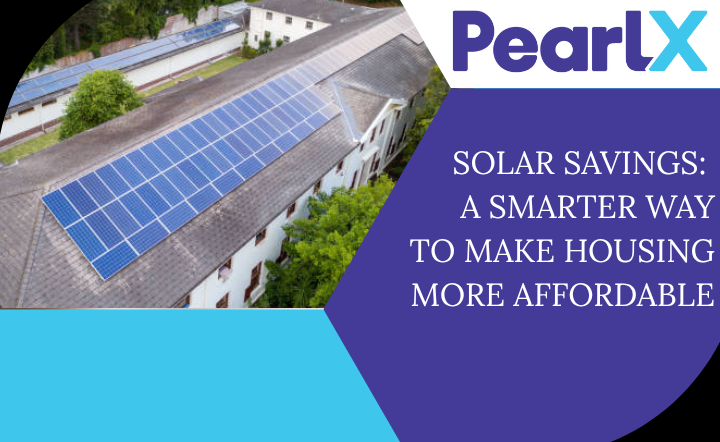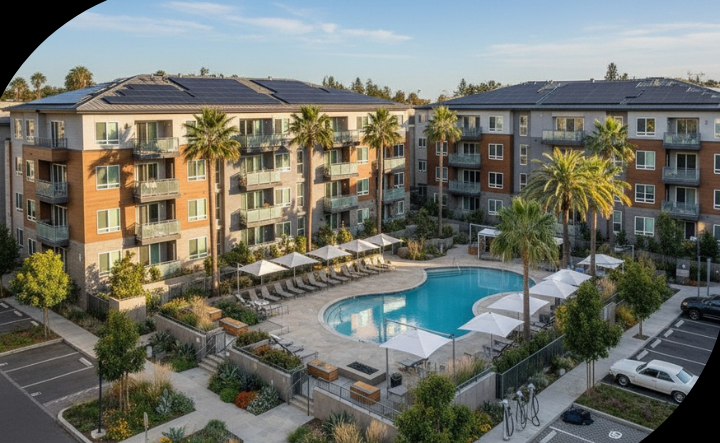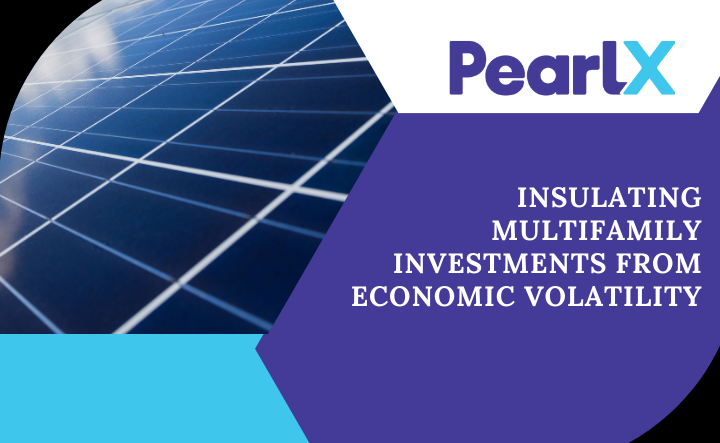
Solar savings: A smarter way to make housing more affordable
BACK TO ALL It’s no secret California faces a housing affordability crisis—but the challenge isn’t just about rent. It’s also about keeping the lights on.
For multifamily owners, leasing a portion of the property to a company that provides sustainable energy infrastructure—like solar or EV charging capabilities—creates value, generates additional revenue and improves the tenant experience, all while meeting green building regulations. It’s hard to see the downside, and yet capital providers like Fannie Mae have been slower to embrace this new lease structure.
Over the last six months, PearlX has led a coalition effort to engage Fannie Mae to update their guidelines and allow for flexible third party owned solar financing structures. If updated, the new guidelines will give clarity to multifamily properties and DUS lenders looking to deploy clean energy technologies that improve NOI and help offset tenant utility costs.
Fannie Mae’s current posted policy states that solar or solar paired with storage must be owned by the borrower (i.e. the building owner). While they have begun considering requests to allow third-party-owned projects on a case-by-case basis, this ad-hoc approach and continuing written prohibition from Fannie Mae has resulted in a complicated and inconsistent process for building owners who want to install third party-owned solar, often deterring solar installation altogether.
Fannie has confirmed in a public letter, and in follow-up communication, that they plan to issue guidance on solar leases in 2025. This is a big step forward for the industry, and multifamily owners and DUS lenders should take note. Upon these actions, solar projects which may have been previously difficult to get approved by Fannie could be streamlined shortly.
Currently, the lack of clear guidance from Fannie causes unnecessary confusion, delays and increased transaction costs for multifamily owners, developers, lenders and sustainable energy providers. By issuing clear guidance to DUS lenders on what structures are pre-approved, Fannie could help align the market.
This would not be a controversial or even new development for Fannie – the agency approved third-party owned financial structures for single family properties back in 2015.
Today, it has an opportunity to follow the Federal Home Loan Mortgage Corporation (Freddie Mac) and the Department of Housing and Urban Development (HUD) and issue clear guidelines that allow for third-party ownership of onsite solar, battery storage, and electrification technologies in multifamily rental communities. This move not only benefits multifamily stakeholders, but also enables these sustainable technologies to reach the underserved renting populations, who have historically been left out of the benefits of clean energy.
Fannie Mae and Freddie Mac collectively back 58% of the US multifamily mortgage market, and without clear guidance from these agencies, multifamily renters have been largely left out of the benefits of renewable energy. While recent developments in some states have helped accelerate the pace of multifamily adoption of onsite clean energy, Fannie Mae’s current guidance prohibiting solar leases poses a major roadblock to further deployment.
Many multifamily properties choose to pursue solar through third-party ownership, wherein a third-party investor owns and operates the onsite solar, and the landlord and residents enjoy the benefits of reduced bills, electrification, and resilience. This can take the form of a lease, a Power Purchase Agreement (PPA), a Solar Services Agreement (SSA), or a similar structure.
This structure was attractive even before the adoption of the Inflation Reduction Act (IRA), but the IRA’s provisions that benefit third-party ownership make it even more of an opportunity for multifamily owners and operators alike. When combined with local, state, and federal incentives, third-party ownership models make multifamily solar financially accessible to properties of all types, especially those for whom the cost of outright ownership of a solar and battery system would be overly burdensome.
But without clear guidelines from Fannie, these structures can be difficult to make work, which presents several problems.
Firstly, it means that residents of multifamily properties continue to be left out of the benefits of the country’s transition to renewable energy. Additionally, it threatens to derail the deployment of funds from the IRA, billions of dollars in federal funding that flow through multifamily properties to reach underserved communities to provide them lower and more predictable electricity costs, cleaner air, electrification technologies, and greater resilience to the impacts of climate change. Finally, it prevents owners of these properties from pursuing onsite value creation that directly benefits Fannie Mae, as owners can use budget savings to increase property services and amenities or reduce their debt service ratios.
Other federal agencies have already grappled with this problem, and we believe there is a roadmap that Fannie Mae can follow to allow solar and storage to be rapidly deployed in a way that benefits multifamily renters. Freddie Mac updated its regulations and provided clear guidance for multifamily properties, including broad eligibility; pre-approved forms including Subordination, Non-Disturbance, and Attornment (SNDA) agreements; a detailed checklist designating the party responsible for completing the analysis; and is successfully processing third-party-owned solar systems. Similarly, HUD pre-approved legal documents and released helpful guidance in early November 2024.
Sustainable energy leases are only going to grow in popularity. Capital providers like Fannie need to take steps now and update their guidelines to incorporate these lease structures on multifamily loan originations.

BACK TO ALL It’s no secret California faces a housing affordability crisis—but the challenge isn’t just about rent. It’s also about keeping the lights on.


BACK TO ALL The multifamily housing sector continues to be under a variety of mounting pressures. Construction costs have gone up 50% since 2019, looming